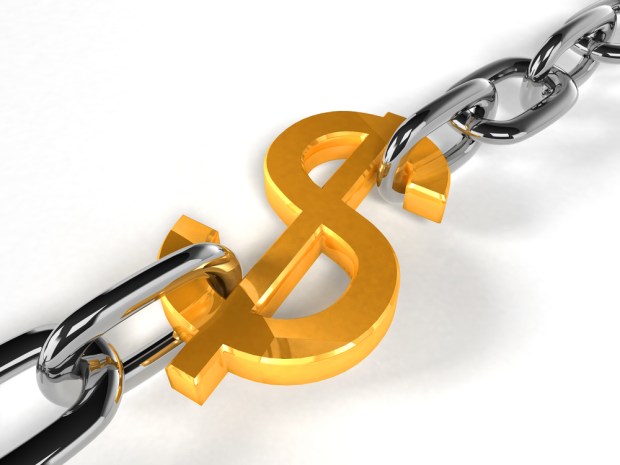A B2B Payments Magic Trick: Making AR Disappear

Whether through virtual payment technologies or faster payment initiatives, the B2B payments ecosystem has explored ways to accelerate the time it takes a buyer to pay its supplier. It’s one of the most common conundrums in this space and has yet to be solved — despite a plethora of options.
Some argue electronic payments, like credit cards, are the answer. Others say late B2B payments are a reality, and instead, suppliers should access external financing to manage cash flow while they wait to get paid.
NOWaccount CEO Lara Hodgson has a different approach. She told PYMNTS why financing the buyer, not the supplier, can not only solve the issue of late payments but make accounts receivable disappear.
What Doesn’t Work
The delay in B2B payments forces small suppliers to explore ways to manage cash flow. Many are advised to access external financing, Hodgson said, whether it be through factoring or other types of loans. For the CEO, however, this makes no sense at all.
“There are very good uses for a loan,” she said. “Any use where proceeds go into your own company makes absolute sense.” Borrowing money to finance equipment or build inventory are sensible options, she offered.
“But when you think about this idea that you would borrow a dollar and turn around and lend that exact same dollar to your customer for free — which is what an invoice is — doesn’t makes sense to me,” Hodgson continued. “Because it’s not really relieving the flow backup; it’s just covering up the fact that you have a backup.”
Small suppliers act as a free lender to their corporate buyers because they are forced to cover costs until that customer pays. But SMEs have few options should they decide not to access external financing. Many firms, Hodgson said, simply deny selling to a late-paying customer altogether.
“Businesses say they could double or triple their business if they weren’t turning down orders,” she said. “But they do because now they can’t float the money for that long, so they accept a slower growth rate or no growth at all.”
Another option is to encourage the use of commercial cards in B2B payments. Proponents of this argue that buyers like to get the rewards associated with cards, while still being able to pay later, and suppliers get paid instantly. Hodgson, however, said the credit card system doesn’t work well for the B2B payments space.
“In the B2B economy, buyers are used to getting an invoice and paying when they’re ready,” she said. “And the minute they elect to use a credit card, their obligation is now to the issuing bank. When that statement goes past due and they don’t pay, there is interest and penalties.”
The CEO said credit cards force a time constraint and financial penalties on corporate buyers that they don’t face when delaying their payment to suppliers. Sure, vendors can charge interest to their late-paying clients, but Hodgson said she has yet to meet a supplier that could actually collect on that interest.
Even those faster and same-day payment initiatives — like Same Day ACH — won’t be too helpful for suppliers looking to see their bills settled more quickly. According to Hodgson, what real-time payments mean is that corporate buyers will simply initiate the payment to their supplier 30, 60 or 90-plus days from receiving the invoice. So, while the money moves more quickly, suppliers still see the funds weeks after they send out the bill.
Buyer Financing
As a trade finance player, NOWaccount acts a bit like a credit card by financing the buyer’s bill. Suppliers get paid sooner, with 90 percent of the invoice paid via ACH to the supplier’s account. The remaining 10 percent gets paid 30 days after the invoice matures — that is, 60 days after it was issued, minus a fee that goes to NOWaccount.
This business model is part of Hodgson’s plan to make accounts receivable disappear altogether.
Say what?
“I know that sounds funny, but it exists today, and it’s not that outlandish,” she said. In the B2C world, the stores that accept checks, cash, card and mobile payments don’t have accounts receivables on the book — despite the fact that many of their customers haven’t yet paid for the products they purchased. Instead, credit card issuers and other intermediaries receive payment from the buyer while providing funds to the store as if the customer has already paid.
This feat isn’t without its challenges. For one, NOWaccount has to manage risk from multiple sides. There’s the risk that a corporate buyer may never cough up the money they owe. There’s even the risk that suppliers can’t ultimately deliver what they’ve charged for, even though they’ve already been paid. For trade finance players, like NOWaccount, innovations in risk mitigation technology can help.
And of course, there’s the monumental task of changing corporate buyer and supplier behavior. There is evidence that check use for B2B payments is on the rise, while analysts expect strong growth for the commercial card market. Hodgson said the issue is a matter of strengthening SMEs’ financial status as the pillars of the national economy.
“Small businesses are holding over $1.2 trillion in trade credit today,” she said. “When you think about that, that’s more than any financial institution. So, the largest lender in our country is not any of the banks. It’s not the Small Business Authority. It’s small businesses.”
Taking accounts receivable off their balance sheets and nixing SMEs’ role as a lender to their buyers is a massively tall order for the economy. But it’s one Hodgson said “could be the largest economic stimulus program our country has ever seen.”